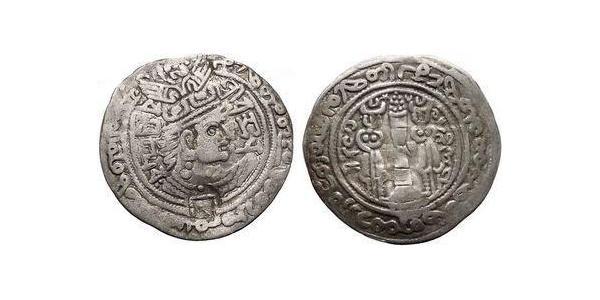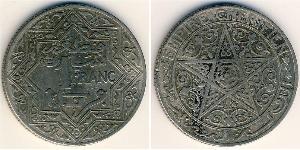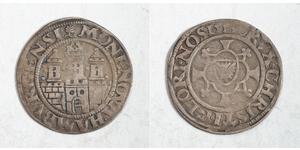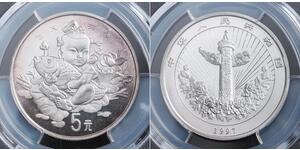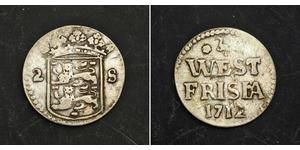[ 5821] HUNNIC TRIBES, Nezak Huns. Shahi Tegin (Sri Shahi),c. 680-738 A.D. Silver Drachm (15mm, 3.15gm.) Uncertain Baktrian mint, c. AD 688. Reference: Vondrovec Type 244=Göbl, Dokumente Em. 244; for c/m: Göbl, Dokumente KM 103. Crowned bust right; c/m: tamgha, below pale gold plug at neck. Fire altar flanked by attendants; star and crescent flanking flames. This type is remarkable for being trilingual – carrying legends in Greco-Baktrian, Pahlavi, and Brahmi – and speaks to the growing influence of the issuing body. Even more unusual, however, is the modification that so many of these coins later received. In addition to being countermarked, and presumably at the same time as the application of the countermark, the majority of these coins were holed and filled with either a debased gold, or less often, a copper plug. The reason for the unprecedented procedure is unclear. It was perhaps undertaken in an effort to raise the value of the coins. Provided with certificate of authenticity. CERTIFIED AUTHENTIC by Sergey Nechayev, PhD - Numismatic Expert White Huns or Hephthalites (hĕfˈthəlĪtsˌ) [key], people of obscure origins, possibly of Tibetan or Turkish stock. They were called Ephthalites by the Greeks, and Hunas by the Indians. There is no definite evidence that they are related to the Huns. The White Huns were an agricultural people with a developed set of laws. They were first mentioned by the Chinese, who described them (A.D. 125) as living in Dzungaria. They displaced the Scythians and conquered Sogdiana and Khorasan before 425. They crossed (425) the Syr Darya (Jaxartes) River and invaded Persia. Held off at first by Bahram Gur, they later (483–85) succeeded in making Persia tributary. After a series of wars (503–13) they were driven out of Persia, permanently lost the offensive, and were finally (557) defeated by Khosru I. The White Huns also invaded India and succeeded in extending their domain to include the Ganges valley. They temporarily overthrew the Gupta empire but were eventually driven out of India in 528 by a Hindu coalition. Although in Persia they had little effect, in India the White Huns influenced society by altering the caste system and disrupting the hierarchy of the ruling families. Some of the White Huns remained in India as a distinct group. This type is remarkable for being trilingual – carrying legends in Greco-Baktrian, Pahlavi, and Brahmi – and speaks to the growing influence of the issuing body. Even more unusual, however, is the modification that so many of these coins later received. In addition to being countermarked, and presumably at the same time as the application of the countermark, the majority of these coins were holed and filled with either a debased gold, or less often, a copper plug. The reason for the unprecedented procedure is unclear. It was perhaps undertaken in an effort to raise the value of the coins. The Huns were a nomadic group of people who are known to have lived in Eastern Europe, the Caucasus, and Central Asia between the 1st century AD and the 7th century. They were first reported living east of the Volga River, in an area that was part of Scythia at the time; the Huns' arrival is associated with the migration westward of a Scythian people, the Alans. They were first mentioned as Hunnoi by Tacitus. In 91 AD, the Huns were said to be living near the Caspian Sea and by about 150 AD had migrated southeast into the Caucasus. By 370 AD, the Huns had established a vast, if short-lived, dominion in Europe. In the 18th century, the French scholar Joseph de Guignes became the first to propose a link between the Huns and the Xiongnu people, who were northern neighbours of China in the 3rd century BC. Since Guignes' time, considerable scholarly effort has been devoted to investigating such a connection. However, there is no scholarly consensus on a direct connection between the dominant element of the Xiongnu and that of the Huns. Priscus, a 5th-cen ...
Mehr...

|
Beigetragen von:
anonymous 2015-08-18 |
Similar Coin Groups

1 Franc Kingdom of France (843-1791) Gol ...
Diese Gruppe hat 18 Münzen / 18 Preise
Add coin to this group
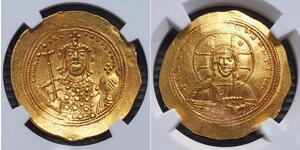
1 Histamenon Byzantinisches Reich (330-1 ...
Diese Gruppe hat 11 Münzen / 8 Preise
Add coin to this group
2025-05-28
- Echtzeit Münzkatalog Verbesserungen / description improving
40 coin descriptions were improved from 2025-05-21 to 2025-05-28
Eine von ihnen ist:
5 Yuan Volksrepublik China Silber
Diese Gruppe hat 2 Münzen
2025-05-24
- New coin is added to 2 Stuiver Niederlande Silber
2 Stuiver Niederlande Silber
Diese Gruppe hat 2 Münzen / 2 Preise
⇑
1712, Netherlands, West Friesland. Silver 2 Stuivers (Double Wappenstuiver) Coin. Condition: VF+ Mint Year: 1712 Province: Holland Reference: KM-106.1. Denomination: 2 Stuivers (Doub ...
Das könnte Sie auch interessieren:

